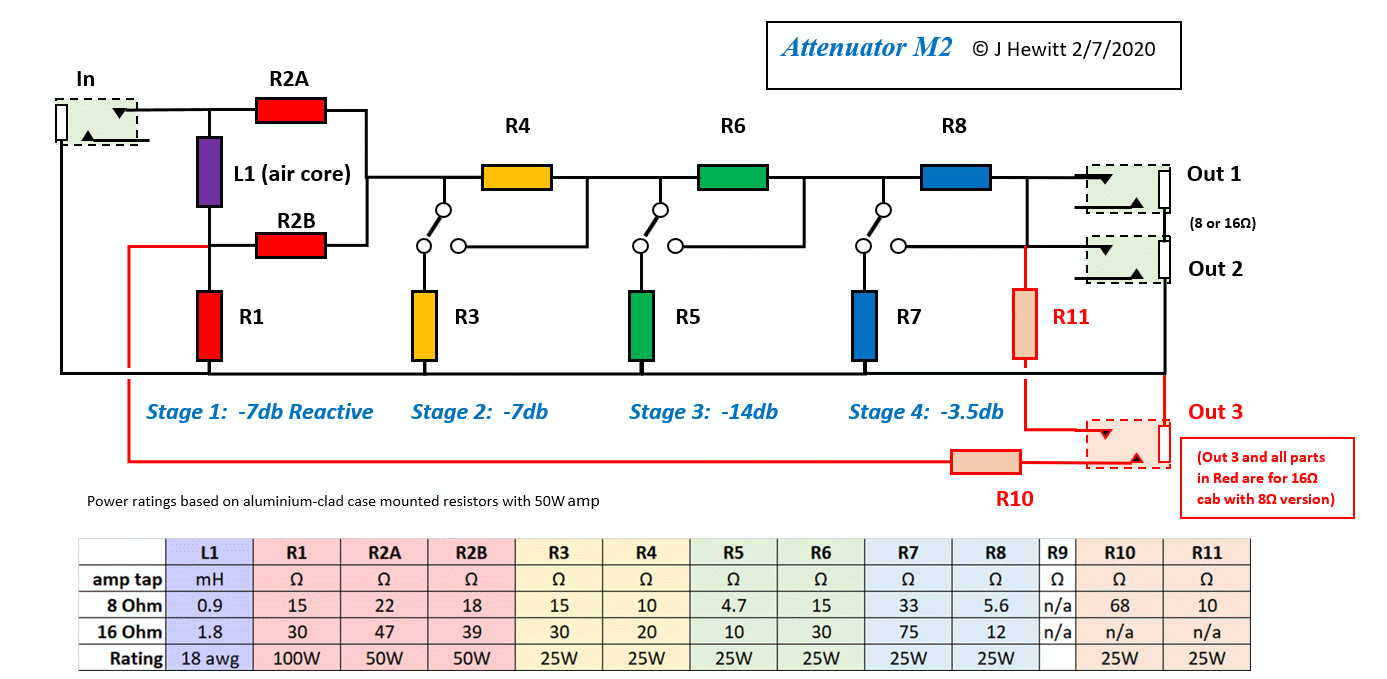telesto
Member
- Joined
- Apr 29, 2020
- Messages
- 67
- Reaction score
- 8
Hi John, one observation/comment regarding the inductor: I'm using amps with relatively low wattage, 10W and 20W amps respectively (Laney Cub 10 and Jet City 20H). I vaguely recall reading somewhere (Aiken?) that inductors have less effect on lower watt amps (?) Maybe this is the reason I'm not noticing much difference with/without the coil? You are doing your testing mostly with a 40W amp, is that correct?
Another remark, I'm using a 0.82mH 1mm thick Visaton coil in the M2 configuration. I also played around and tried a "split coil" formation (0.4mH with 22R series, and 0.6mH shunt) together with a T-attenuator, but the coils sounded saturated or distorted or something. I didn't really do any sim or math, I just sort of mimicked the original design Stage 1, but with different resistor values. Didn't work out well, but I was just playing around and experimenting.
Another remark, I'm using a 0.82mH 1mm thick Visaton coil in the M2 configuration. I also played around and tried a "split coil" formation (0.4mH with 22R series, and 0.6mH shunt) together with a T-attenuator, but the coils sounded saturated or distorted or something. I didn't really do any sim or math, I just sort of mimicked the original design Stage 1, but with different resistor values. Didn't work out well, but I was just playing around and experimenting.

 Well, I can only compare to the variable L-Pad that I had connected before, I don't have any other attenuators.
Well, I can only compare to the variable L-Pad that I had connected before, I don't have any other attenuators. Besides it had some previous issues, I bought it in a non-functional state for cheap, and managed to get it working, but I'm still a little skeptical of it. I also have a Hiwatt clone that uses 6V6 or KT66, but I only have 6V6 tubes, KT66 tubes are kinda expensive, and I don't need that kind of power, since I mainly just play at home. I also have a couple of 5W heads. Maybe if I have time I can make some further tests. But ok, I'll probably start with the Laney tomorrow and see how that goes...
Besides it had some previous issues, I bought it in a non-functional state for cheap, and managed to get it working, but I'm still a little skeptical of it. I also have a Hiwatt clone that uses 6V6 or KT66, but I only have 6V6 tubes, KT66 tubes are kinda expensive, and I don't need that kind of power, since I mainly just play at home. I also have a couple of 5W heads. Maybe if I have time I can make some further tests. But ok, I'll probably start with the Laney tomorrow and see how that goes...

 I'm impressed. Tube amps definitely sound better when they are turned up above 1 on the MV... Anyway, here are some pics. My enclosures are steel, hence the vertical mounting of the inductors.
I'm impressed. Tube amps definitely sound better when they are turned up above 1 on the MV... Anyway, here are some pics. My enclosures are steel, hence the vertical mounting of the inductors.




